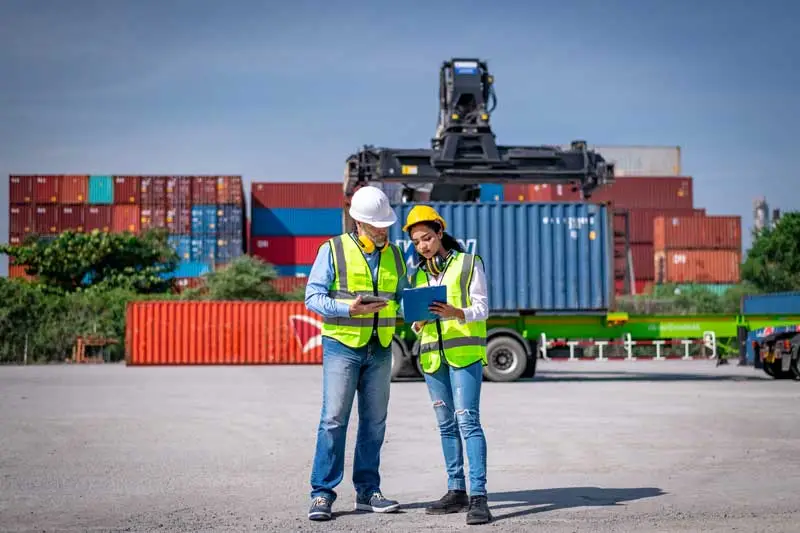In the rapidly evolving landscape of freight and food logistics, technology and automation are set to play a transformative role. As global trade expands and consumer demands for faster, more reliable delivery grow, the logistics industry faces mounting pressure to enhance efficiency, reduce costs, and maintain sustainability. Innovations in technology and automation are paving the way for significant advancements in these areas, promising a future where logistics operations are more streamlined, resilient, and eco-friendly.
Technological Innovations Driving Efficiency
1. Internet of Things (IoT): The integration of IoT devices in logistics is revolutionising the way goods are tracked and managed. IoT sensors and devices enable real-time tracking of shipments, providing accurate data on location, temperature, humidity, and other critical parameters. This level of visibility helps logistics companies optimise routes, reduce delays, and ensure the integrity of perishable goods in the food supply chain.
2. Blockchain Technology: Blockchain offers a secure and transparent method for recording transactions and tracking goods throughout the supply chain. This technology can help prevent fraud, reduce paperwork, and improve traceability. In the food industry, blockchain ensures the authenticity of products, enhancing food safety by allowing stakeholders to trace the origin and journey of food items quickly and accurately.
3. Artificial Intelligence (AI) and Machine Learning: AI and machine learning algorithms are being deployed to analyse vast amounts of data generated in logistics operations. These technologies can predict demand, optimise inventory levels, and improve route planning. For instance, AI-driven predictive analytics can help food logistics companies anticipate peak demand periods and adjust their supply chains accordingly, minimising waste and ensuring timely deliveries.
4. Autonomous Vehicles and Drones: The development of autonomous trucks and delivery drones is set to revolutionise freight and food logistics. Autonomous vehicles can operate around the clock, reducing the need for human drivers and increasing efficiency. Delivery drones can expedite last-mile delivery, especially in urban areas where traffic congestion can cause delays. These technologies promise to cut delivery times and reduce transportation costs significantly.
Automation Enhancing Operational Efficiency
1. Warehouse Automation: Automated warehouses equipped with robotic systems are becoming increasingly common in the logistics industry. These systems can handle tasks such as picking, packing, and sorting with greater speed and accuracy than human workers. Automated guided vehicles (AGVs) and autonomous mobile robots (AMRs) navigate warehouse floors, transporting goods and optimising storage space. This not only enhances operational efficiency but also reduces labor costs and the risk of human error.
2. Automated Inventory Management: Automation in inventory management systems helps logistics companies maintain accurate stock levels and reduce the risk of overstocking or stockouts. Automated systems can monitor inventory in real-time, generate reorder alerts, and even place orders automatically. This is particularly beneficial in food logistics, where maintaining optimal inventory levels is crucial to prevent spoilage and ensure fresh products reach consumers.
3. Smart Packaging: Smart packaging technology, incorporating sensors and QR codes, allows for better monitoring of the condition and location of goods. In food logistics, smart packaging can detect temperature changes, ensuring that perishable items are stored and transported under optimal conditions. This not only reduces food waste but also enhances food safety and quality.
Sustainability and Future Prospects
1. Eco-friendly Transportation Solutions: The logistics industry is increasingly adopting eco-friendly transportation solutions to reduce its carbon footprint. Electric trucks and vehicles powered by alternative fuels are becoming more prevalent, driven by advancements in battery technology and the push for sustainability. Autonomous electric vehicles, in particular, hold great promise for reducing emissions in freight and food logistics.
2. Collaborative Logistics Platforms: Collaborative platforms that connect various stakeholders in the supply chain are emerging as a key trend. These platforms facilitate data sharing, improve coordination, and enable more efficient use of resources. For example, food logistics companies can use collaborative platforms to share transportation assets, reducing empty miles and optimising load capacities.
3. Advanced Analytics and Big Data: The use of advanced analytics and big data is set to further enhance decision-making in logistics. By leveraging data from various sources, companies can gain deeper insights into market trends, customer preferences, and operational performance. This enables more informed strategic planning and the ability to adapt to changing market conditions swiftly.
The future of freight and food logistics is poised to be shaped by the continuous integration of technology and automation. These innovations promise to enhance efficiency, reduce costs, and promote sustainability in the industry. As logistics companies embrace these advancements, they will be better equipped to meet the growing demands of global trade and consumer expectations, paving the way for a more efficient and resilient logistics ecosystem.



